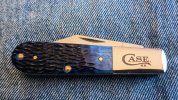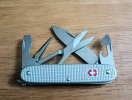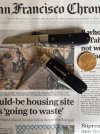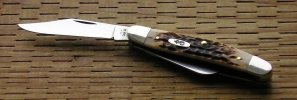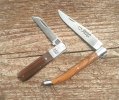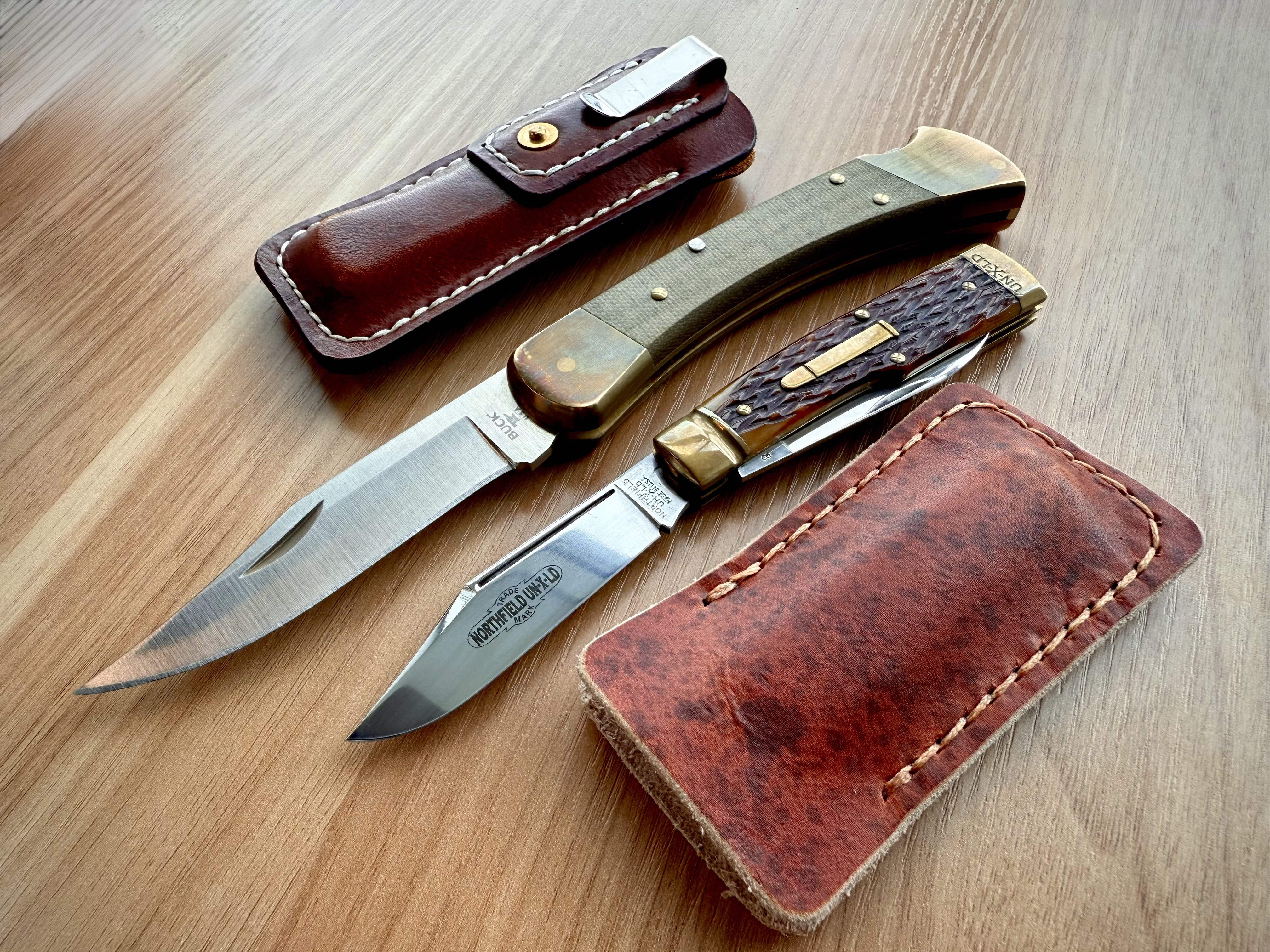-
The BladeForums.com 2024 Traditional Knife is available! Price is $250 ea (shipped within CONUS).
Order here: https://www.bladeforums.com/help/2024-traditional/
You are using an out of date browser. It may not display this or other websites correctly.
You should upgrade or use an alternative browser.
You should upgrade or use an alternative browser.
What "Traditional Knife" are ya totin' today?
- Thread starter jackknife
- Start date
Amir Fleschwund
Gold Member
- Joined
- Nov 29, 2008
- Messages
- 8,301
"Early" Stuart. Looks like a good book. One of the CW's greats
Beautiful Camillus.Hi, all.
I've gotten a bit tired of carrying the same usual alox SAK that's been in my pocket the last few years, so I'm sort of re-examining a bit of my traditional knife collection. Carrying my favorite Camillus Engineer's Knife today.
Rumor has it that I'll be pocketing a late 30's to early 40's Remington RS-3333 scout knife tomorrow. I'll try to remember to snap a pic.

Nice to see you re-surface, Buddy.
Amir Fleschwund
Gold Member
- Joined
- Nov 29, 2008
- Messages
- 8,301
View attachment 2934040
Yep. Bakelite(?) covers and short screwdriver. I don't believe they are celluloid. I "think" the mark side cover/bolster gap is due to being overly trimmed or the mold was a little short. No indications of outgassing anywhere on the knife.
(Kodak used black, brown, and I think green bakelite for cameras in that time frame. I had a black bakelite 620 roll film Kodak TLR camera, and a brown bakelite 127 roll film Kodak "Brownie" camera back in the 1960's. Both were "point & shoot" with fixed focus and fixed exposure. (Tho the "Brownie" could use a removable flash with bulbs.)
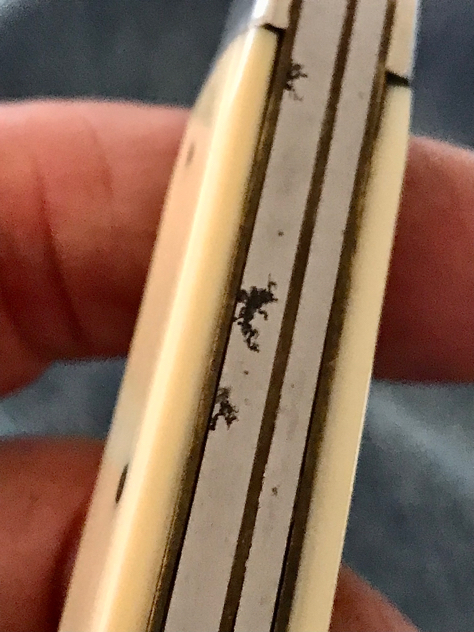
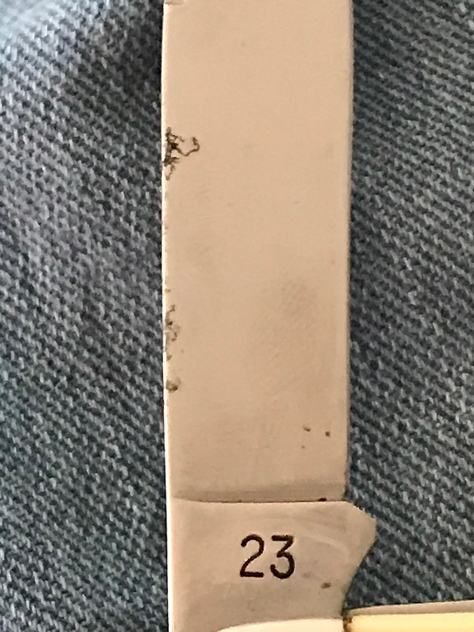
For educational purposes...
This 23 had never been sharpened or used until I bought it. Even though it was made in the late '40s. (Short-line tang stamp)
The Ivoroid, which I think was a contraction of Imitation Ivory Celluloid, has shrunk, and is outgassing. The pepper spots show what deteriorating celluloid does to steel.
Amir Fleschwund
Gold Member
- Joined
- Nov 29, 2008
- Messages
- 8,301
Yesterday and again.
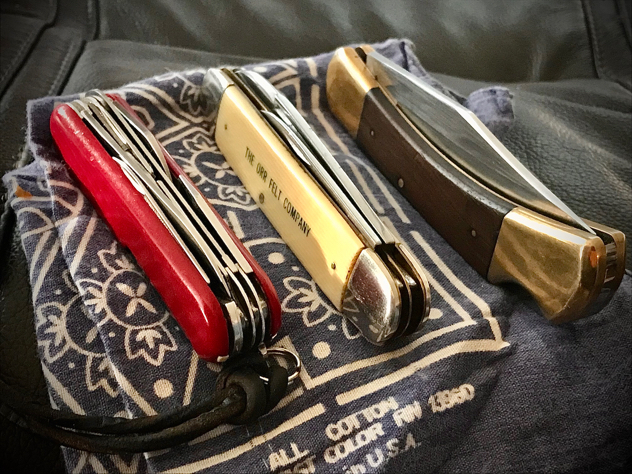
Closed.
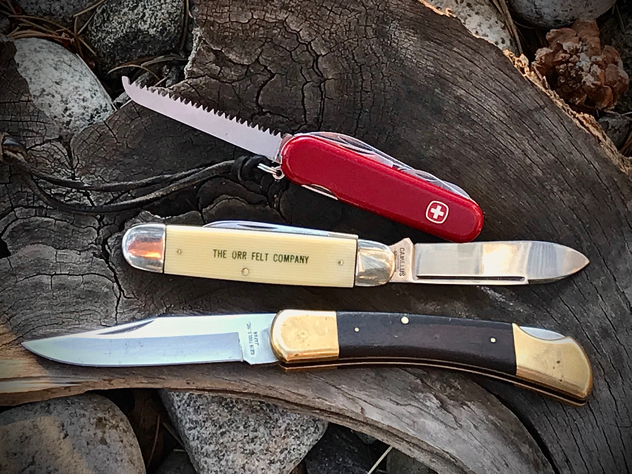
Open.
Have a fun day.

Closed.

Open.
Have a fun day.
Last edited:
Buzzbait
Gold Member
- Joined
- Feb 25, 2001
- Messages
- 6,810
Beautiful Camillus.
Nice to see you re-surface, Buddy.
Thank you so much. It's great to see so many familiar faces.
As promised, I've pocketed one of my beloved Remingtons RS-3333's today. Just a wonderful knife. Still snappy after all these years, and positively dripping with traditional nostalgia. One of my top 10 favorite slipjoints. Maybe not quite as functional as yesterday's Camillus, but there's just something about the old Remingtons. It's like holding good history in your hands, recalling what it's like to be a kid in the outdoors. A very artful design and execution.

DaveHS
Gold Member
- Joined
- Nov 22, 2024
- Messages
- 5,122
Love this one! Is that Bocote?I'll start breaking this boys knife in today. I've wanted a wood covered 15 spear for a long time, happy to finally add one to the collection. I hope you all have a great weekend!

pat9198
Gold Member
- Joined
- Jul 21, 2021
- Messages
- 4,934
Yes Dave, it’s Mexican Bocote. Thank you!Love this one! Is that Bocote?
sf fanatic
Platinum Member
- Joined
- Apr 4, 2017
- Messages
- 5,295
afishhunter
Basic Member
- Joined
- Oct 21, 2014
- Messages
- 14,783
Switching to my Case 6375CV.
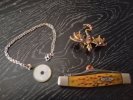
With my long term carry; "D" (1980) Western 062 Folding Hunter, VIC Year of the Ox Huntsman, and Toferner (nonfolding) medieval style Celtic/Norse/"Viking" pocket knife, carried as a neck knife in a modified OEM sheath.
The MOP disk is ruther difficult to show the luminescense in an photo.
It looks better in person ... honest.
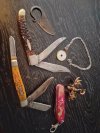

With my long term carry; "D" (1980) Western 062 Folding Hunter, VIC Year of the Ox Huntsman, and Toferner (nonfolding) medieval style Celtic/Norse/"Viking" pocket knife, carried as a neck knife in a modified OEM sheath.
The MOP disk is ruther difficult to show the luminescense in an photo.
It looks better in person ... honest.

black mamba
Gold Member
- Joined
- Oct 21, 2009
- Messages
- 23,594
The wife and I are heading out shortly for lunch at Cheesecake Factory and then the F1 movie. Packin' the old Schrade stockman.


afishhunter
Basic Member
- Joined
- Oct 21, 2014
- Messages
- 14,783
I had a "Made in USA" branded 2 blade jack knife with outgassing cell covers.

For educational purposes...
This 23 had never been sharpened or used until I bought it. Even though it was made in the late '40s. (Short-line tang stamp)
The Ivoroid, which I think was a contraction of Imitation Ivory Celluloid, has shrunk, and is outgassing. The pepper spots show what deteriorating celluloid does to steel.
The blades above the well were solid black. The portion of the blades in the well when closed were still silver. The backsprings were also black, and the bolsters and pins were heavily tarnished.
I don't know who made it, tho I suspect it was Camillus, or maybe Utica or Ulster ... if Ulster ever made a contract knife without their name on it somewhere .
It didn't have shell construction, so it (probably) wasn't Imperial or Colonial, unless it was much older than I thought, or a "no name" Imperial Pioneer/Ikco or Colonial Forester, intended for service/gas station point of sales in the 1950's and 1960's.
Buckeye Sharp
Gold Member
- Joined
- Feb 20, 2015
- Messages
- 1,178
Buzzbait
Gold Member
- Joined
- Feb 25, 2001
- Messages
- 6,810
I had a "Made in USA" branded 2 blade jack knife with outgassing cell covers.
The blades above the well were solid black. The portion of the blades in the well when closed were still silver. The backsprings were also black, and the bolsters and pins were heavily tarnished.
I don't know who made it, tho I suspect it was Camillus, or maybe Utica or Ulster ... if Ulster ever made a contract knife without their name on it somewhere .
It didn't have shell construction, so it (probably) wasn't Imperial or Colonial, unless it was much older than I thought, or a "no name" Imperial Pioneer/Ikco or Colonial Forester, intended for service/gas station point of sales in the 1950's and 1960's.
I believe that the Made in USA knives were a product of Kingston Cutlery, a joint venture between Imperial and Ulster during WW2. Kingston only lasted from 1943 to 1947, when Imperial and Ulster decided to merge companies, thus disolving the Kingston name. Half way through the life of Kingston, in 1945, they acquired Schrade.
- Joined
- Jan 18, 2025
- Messages
- 367

